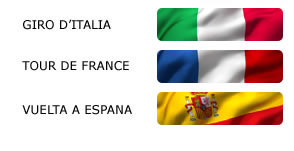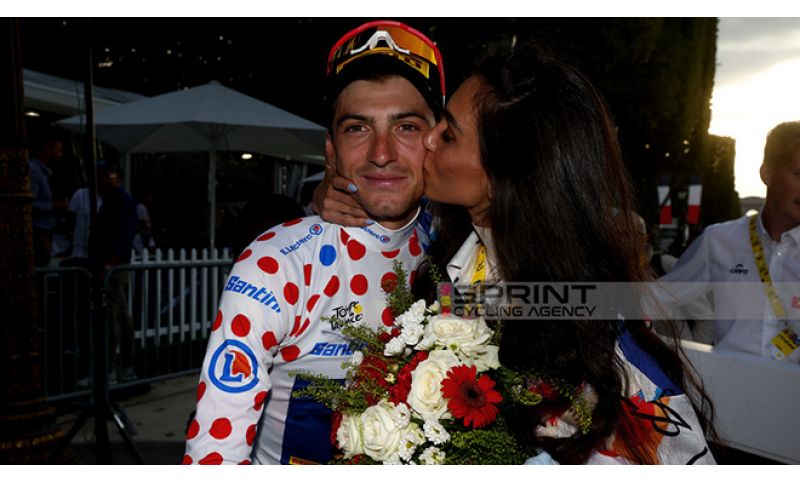

This year, the polka dot jersey, which identifies the leader of the mountain classification, turns 50 years old. It is one of the most recognized symbols of the Grande Boucle, that white jersey with red dots that riders initially disliked because it reminded them of the costumes clowns wore in circuses.
It was 1975, when Chocolats Poulain, partner of the Grand Prix de la Montagne, urged Félix Lévitan, deputy director of the Tour de France, to create a distinctive jersey to give more visibility to that secondary classification, which had already crowned mountain giants like Fausto Coppi, Charly Gaul, and Federico Bahamontes. Since they were talking about visibility, Lévitan opted for something eye-catching: white with red dots, a replica of the jersey worn in the 30s and 40s by track cyclist Henri Lemoine, nicknamed "P'tit Pois" or "little pea" precisely because of the red dots characterizing his outfit. Initially, the riders were quite skeptical, but that jersey with red dots quickly established itself, fascinating the public and exalting the cyclists who would rise from their saddles in the mountains to be the first to reach the summit.
There's little to say about this prestigious jersey: when someone wears it among the Pyrenees, Alps, and Central Massif, the public goes crazy, cheering regardless of the team or nationality. In French schools, when children draw the Tour de France, the polka dot jersey is always drawn next to the yellow jersey, and they love the heroism of those who wear it.
The greatest riders, the strongest of all, certainly aim for the yellow jersey, but when they come second, the white jersey with red dots still excites those who didn't win the general classification. Over the years, the mountain stage categories and point allocation have changed multiple times to ensure the most deserving climber wins it. But cycling is not an exact science...
It's been exactly 50 years since the mountains have welcomed this symbol, and in its history, the polka dot jersey has been worn by extraordinary champions. Actually, the best climber classification has existed since 1908, and the honor roll includes the most acclaimed champions like our Bottecchia, who won the general classification in 1924 and 1925, just as Gino Bartali did in 1938 and 1948, and then Fausto Coppi in 1949 and 1952. The honor roll also features top climbers like Gastone Nencini in 1957 and Imerio Massignan in 1960 and 1961. The great Eddy Merckx also won this classification twice, between 1969 and 1970. Since 1975, the year of the polka dot jersey's debut, it's worth noting that France is the country that has worn it most often.
The Belgian Lucien Van Impe was the first to wear it and in that distant 1975, he hated it more than ever, feeling ridiculous in those colors. Then when he wore it again in 1977-1981 and 1983, he carried it with great pride. France has won it 20 times in the last 49 years with Martinez, Vallet, Hinault, Cleveyrolat, Virenque's 7 times, Rinero, Jalabert's two times, Charteau, and in recent years, Voeckler in 2012, Barguil in 2017, and finally Alaphilippe in 2018 and Bardet in 2019. For Italy, we have 5 polka dot jerseys, won by Giancarlo Bellini in 1976, Giovanni Battaglin in 1979, Claudio Chiappucci in 1991-1992, and most recently Giulio Ciccone in 2023.

Se sei giá nostro utente esegui il login altrimenti registrati.